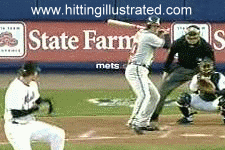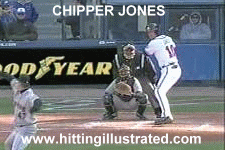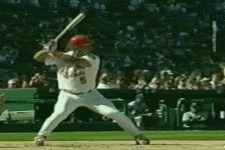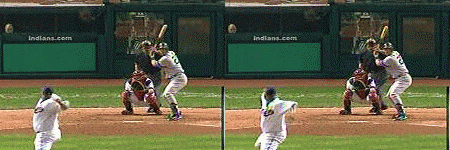quote:
Originally posted by PGStaff:
I am just a bit confused as to how the hands can cause everything else to automatically work properly. Please keep it up!
It's the direction of the launch by the hands....not just the hands.
The forearms have to rotate....rear forearm supinates....lead forearm pronates.
You just have to grab a pole and supinate/pronate the forearms as if to snap it off just below the bottom hand. Pay attention to what your body wants/needs to do to deal with the resistance that pole provides.
Then...experiment with a bat like this...

If so, you'll really start to understand this...

...and what is shown here...
BondsNotice how many times Bonds front foot lands "open" as if he's stepping in the bucket some.
Notice how he does not land toe/heel....instead his foot lands flat most of the time. And if the toe does land first there is NO toe touch to heel drop creation of rotation as taught by many.
Notice how far open the hips are when his front foot lands.
More importantly, notice how far open the hips are when his hands "go"....when they give up the "hold".
Notice how he sends the barrel rearward to create an arc....and opens against that arc.
Notice how he then gets that arc in front of the ball.
Notice how almost every swing starts exactly the same....with the hand swivel....in the same direction....from the same height....no matter where the pitch is....yet he gets to all of em.
Then verify it with this...
Other Pro ExamplesHere is one for the lazy...



First determine Chippers "go"....his hand commitment.
Then notice what the barrel did before "go".
Then notice where the barrel is AT "go".
Then notice what the hips did before "go".
Then notice where the hips are....what position they are in....AT "go".
Then notice just HOW the bat is fired....how it is fired into the already occuring arc. In other words....rearward.
Notice the "suddenness" of the actual launch....the "go" move.
Notice the increase in tempo as he steps onto the people mover (as the bat engages with the already moving hips).
Notice how he is several frames into what most people consider the swing before he commits.
Then notice how he gets that arc to the ball.



















